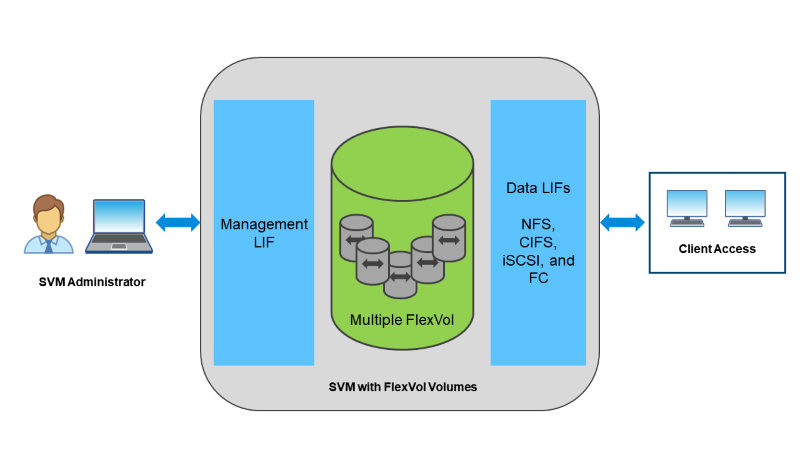Unified Storage
 Suggest changes
Suggest changes


ONTAP unifies storage through a simplified, software-defined approach for secure and efficient management, improved performance, and seamless scalability. This approach enhances data protection and enables effective use of cloud resources.
Originally this unified approach referred to supporting both NAS and SAN protocols on one storage system, and ONTAP continues to be a leading platform for SAN along with its original strength in NAS. ONTAP now also provides S3 object protocol support. Though S3 isn't used for datastores, you can use it for in-guest applications. You can learn more about the S3 protocol support in ONTAP in the S3 configuration overview. The term unified storage has evolved to mean a unified approach to storage management, including the ability to manage all of your storage resources from a single interface. This includes the ability to manage both on-premises and cloud storage resources, the latest All SAN Array (ASA) systems, and the ability to manage multiple storage systems from a single interface.
A storage virtual machine (SVM) is the unit of secure multitenancy in ONTAP. It is a logical construct allowing client access to systems running ONTAP. SVMs can serve data concurrently through multiple data access protocols via logical interfaces (LIFs). SVMs provide file-level data access through NAS protocols, such as CIFS and NFS, and block-level data access through SAN protocols, such as iSCSI, FC/FCoE, and NVMe. SVMs can serve data to SAN and NAS clients independently at the same time, as well as with S3.

In the vSphere world, this approach could also mean a unified system for virtual desktop infrastructure (VDI) together with virtual server infrastructure (VSI). Systems running ONTAP are typically less expensive for VSI than traditional enterprise arrays and yet have advanced storage efficiency capabilities to handle VDI in the same system. ONTAP also unifies a variety of storage media, from SSDs to SATA, and can extend that easily into the cloud. There's no need to buy one flash array for performance, a SATA array for archives, and separate systems for the cloud. ONTAP ties them all together.
NOTE: For more information on SVMs, unified storage and client access, see Storage Virtualization in the ONTAP 9 Documentation center.


